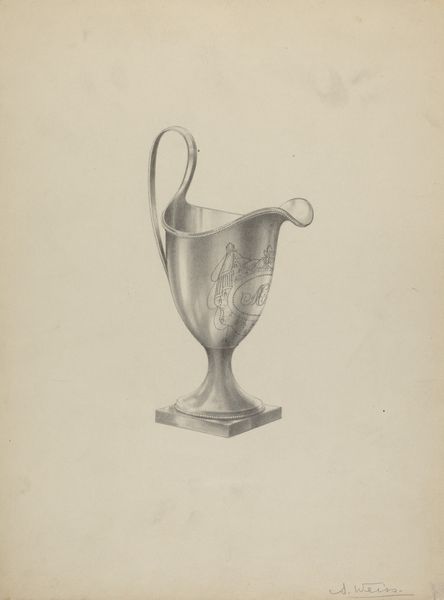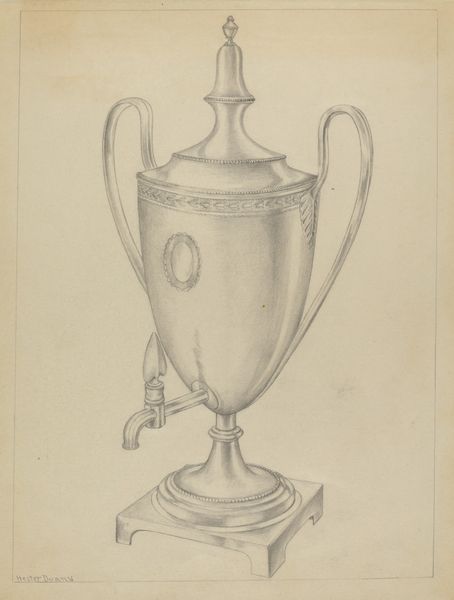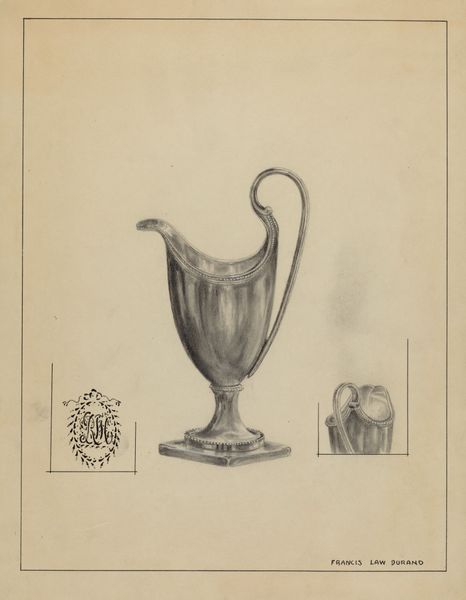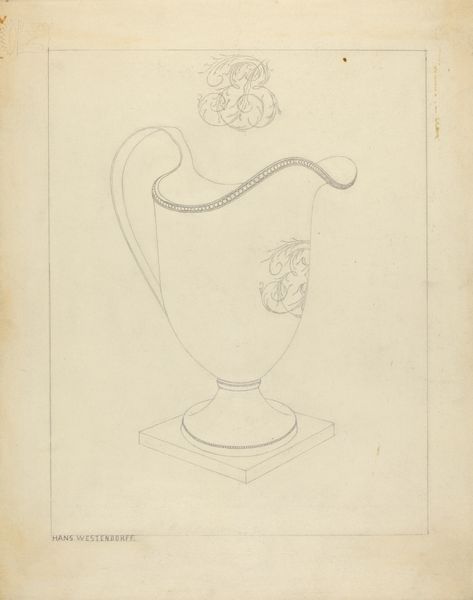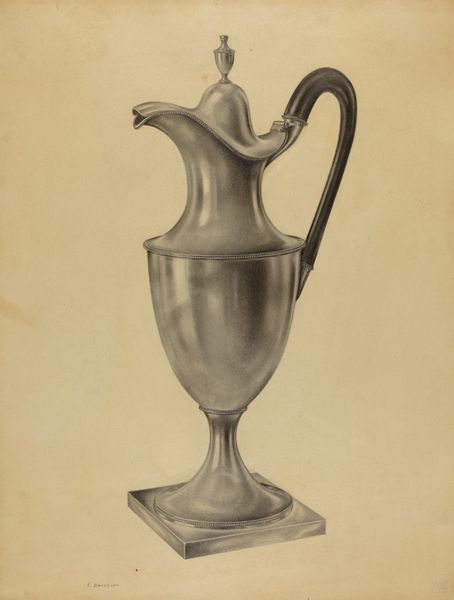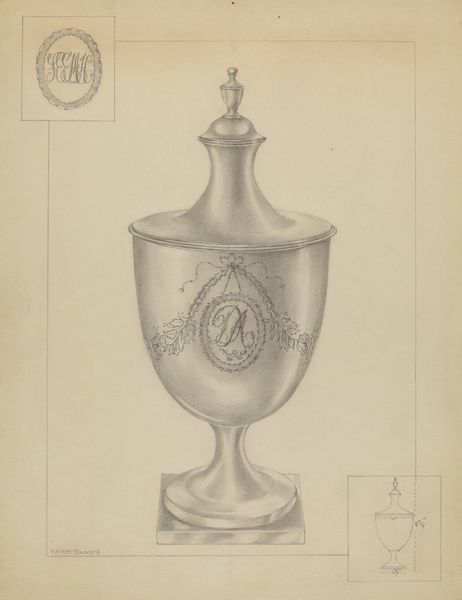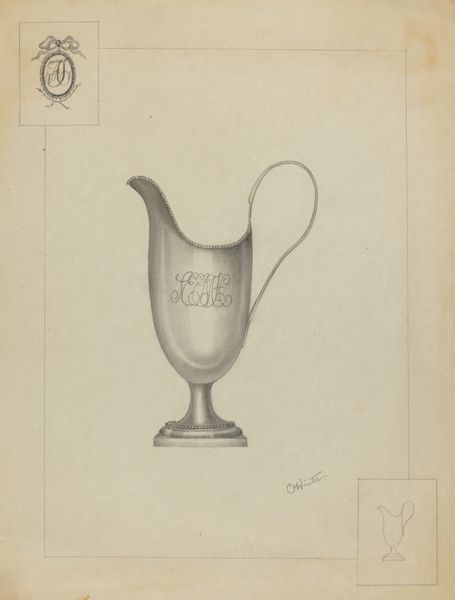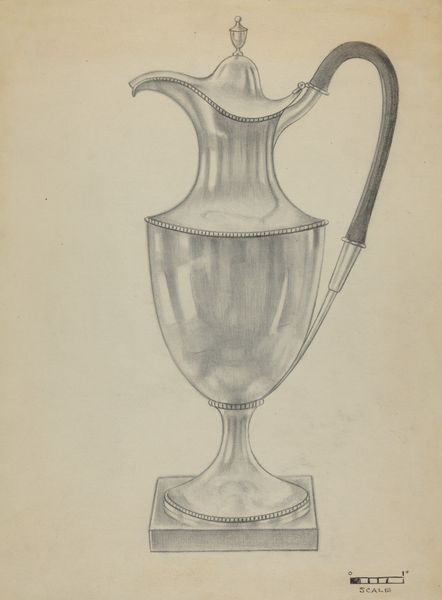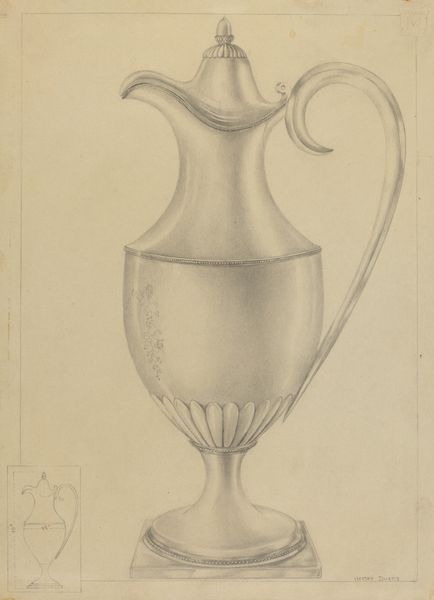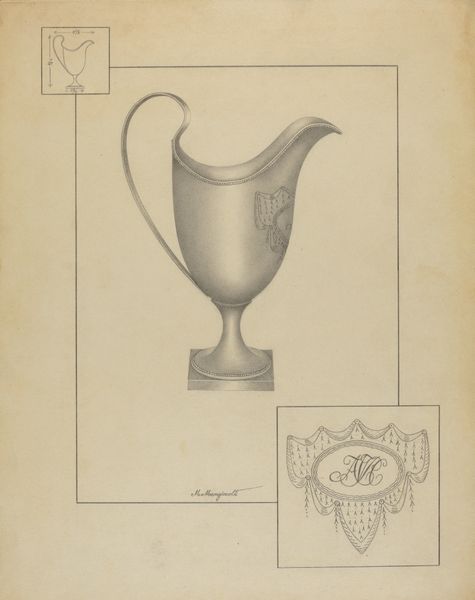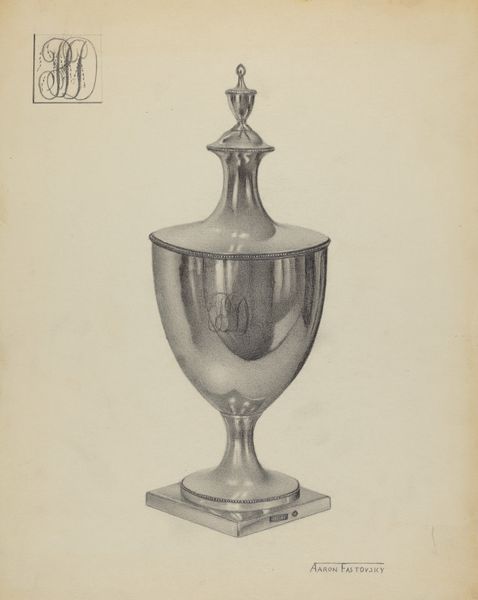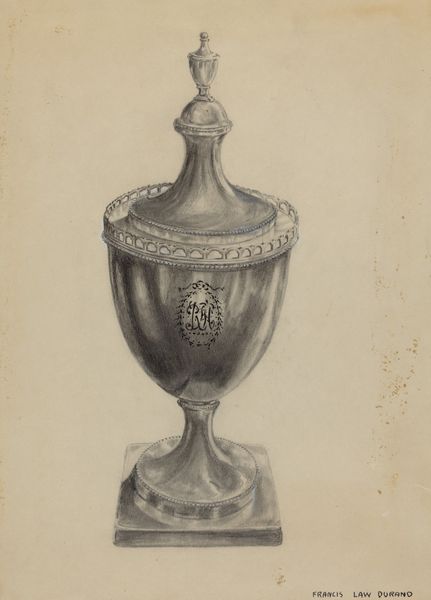
drawing, pencil
#
drawing
#
pencil drawing
#
underpainting
#
pencil
#
academic-art
Dimensions: overall: 28.4 x 22.8 cm (11 3/16 x 9 in.) Original IAD Object: 6 5/8" high
Copyright: National Gallery of Art: CC0 1.0
Curator: Let's talk about this pencil drawing, “Silver Creamer,” by Vincent Carano, circa 1936. It seems deceptively simple, doesn't it? Editor: It does. It’s quite beautiful, rendered with such delicate precision. What’s striking to me is how ordinary it is. It’s not a grand, historical subject, but just… a creamer. How do you interpret this focus? Curator: I think that's exactly the point. By focusing on the mundane object, we're directed to consider the means of production and the social context. It’s not just *what* is represented, but *how* and *why*. Consider the economic context of the 1930s. Who had access to such a seemingly simple object, and what kind of labor was involved in its creation? Editor: So, the drawing becomes less about the creamer itself and more about the world surrounding it. The means of production... So, was this a common item? A luxury? Curator: Precisely. Was it mass-produced or handcrafted? Look at the details - the floral design and the handle's curve, it hints at handcrafting techniques but drawing of this object could also be used for its mechanical production later on. What materials are simulated in the drawing and who did they benefit? What does this piece suggest about the blurring of boundaries between art, craft, and industry during this time? Editor: It really flips how I initially saw the work. Thinking about the labor and resources makes it so much more than a simple drawing of a creamer. So, thinking of it from a materialist point of view, it's almost a mirror reflecting back questions of value and production. Curator: Exactly. By grounding our analysis in materiality, we begin to understand art as part of a much broader network of social relations. What do you take away from understanding this now? Editor: I’ll definitely look closer at the "ordinary" in art now, considering the who, how, and why of its making. Thanks.
Comments
No comments
Be the first to comment and join the conversation on the ultimate creative platform.
